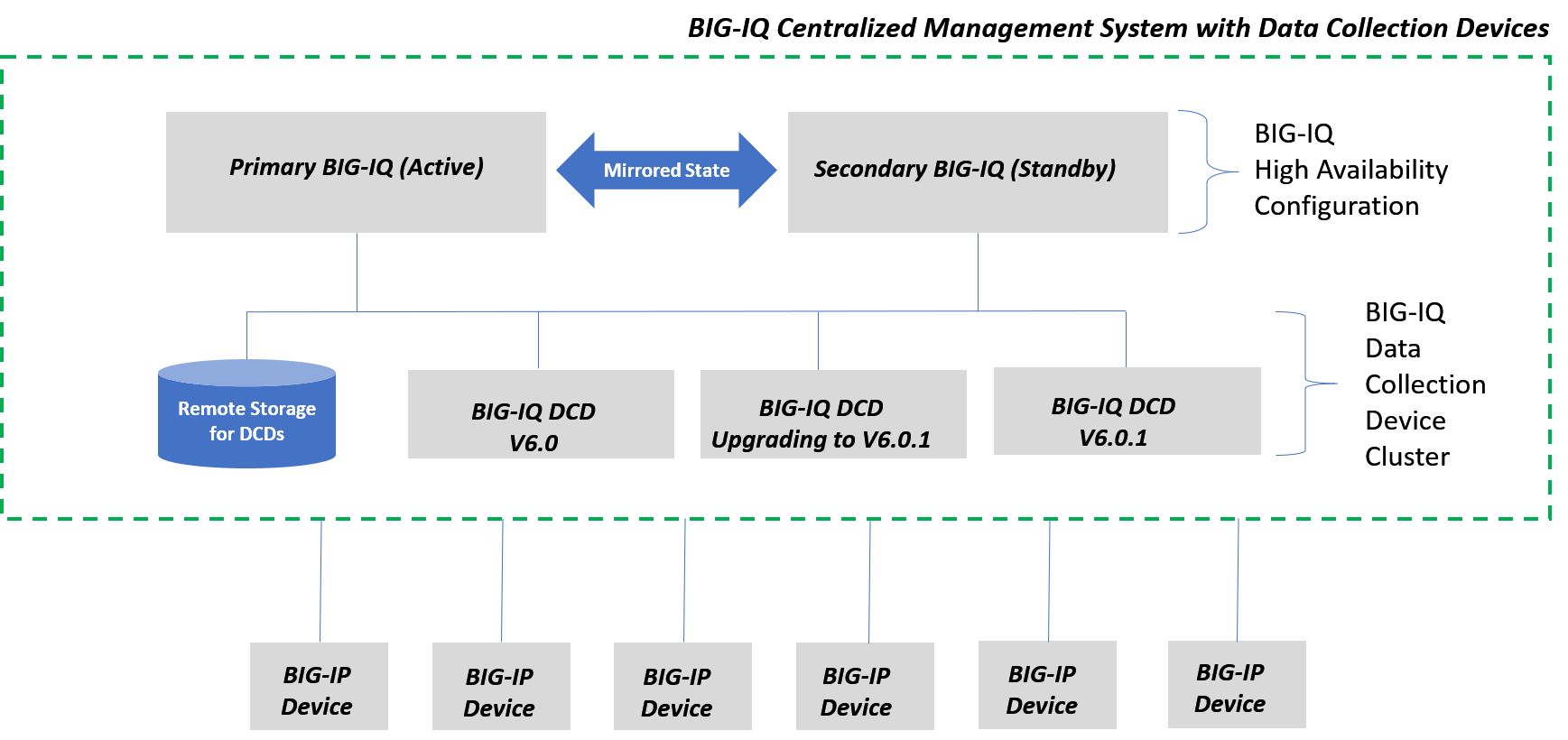Applies To:
Show Versions
BIG-IQ Centralized Management
- 6.0.1
Upgrading BIG-IQ Version 6.0 with a Data Collection Device Cluster to Version 6.0.1 with Minimal Downtime
What is a minimal downtime upgrade?
The minimal downtime upgrade process (also referred to as rolling upgrade) significantly reduces the amount of time your system is offline while you are upgrading to the latest version. The degree to which your BIG-IQ system and DCD cluster can maintain complete online function during upgrade depends on which BIG-IP services you manage, and what kind of data you collect.
- Operators using the BIG-IQ system to review alerts and events might notice slightly slower performance during the upgrade. Data might take a bit longer to refresh, and searches might take a little more time to run.
- You should not lose any ASM events or FPS alerts during the upgrade.
- You should maintain almost all of your AFM events during the upgrade.
- Statistics data is not collected during the upgrade.
- There is a brief downtime (approximately 5 seconds) when the primary BIG-IQ system is upgraded.
- There is another short downtime (less than a minute) when the secondary BIG-IQ is paired with the primary BIG-IQ.
Upgrading BIG-IQ version 6.0 with a data collection device cluster to version 6.0.1 with minimal downtime
What BIG-IQ setup does this upgrade process support?
The following upgrade process to BIG-IQ Centralized management version 6.0.1 is for system setups that currently have version 6.0 installed, and include a data collection device cluster with at least three devices. If your system is not currently running version 6.0 and does not include a data collection device cluster with three or more devices, refer to Which BIG-IQ setups support an upgrade to version 6.0.1?.
What happens during a BIG-IQ upgrade to version 6.0.1?

Summary of tasks to upgrade BIG-IQ system and DCD cluster with minimal downtime
To avoid taking the DCD cluster offline for an extended time during upgrade, the rolling upgrade process upgrades the BIG-IQ system and then one device at a time (while still collecting data) for the devices in the DCD.
The rolling upgrade process consists of the following tasks.
- Download the BIG-IQ software image from the F5 Downloads site.
- Upload the BIG-IQ software image to BIG-IQ.
- Confirm alerts and events can be sent to an alternative device in the DCD cluster.
- Upgrade of all of the devices in the DCD cluster.
- Upgrade of the primary BIG-IQ system.
Manually upgrade the secondary BIG-IQ system
- Upload the software image to the secondary BIG-IQ system.
- Manually upgrade the secondary BIG-IQ system.
Complete post-upgrade process
- Add the secondary BIG-IQ system back to the primary BIG-IQ system.
- Re-discover devices and re-import services.
- Re-import any access groups (with or without SWG data).





